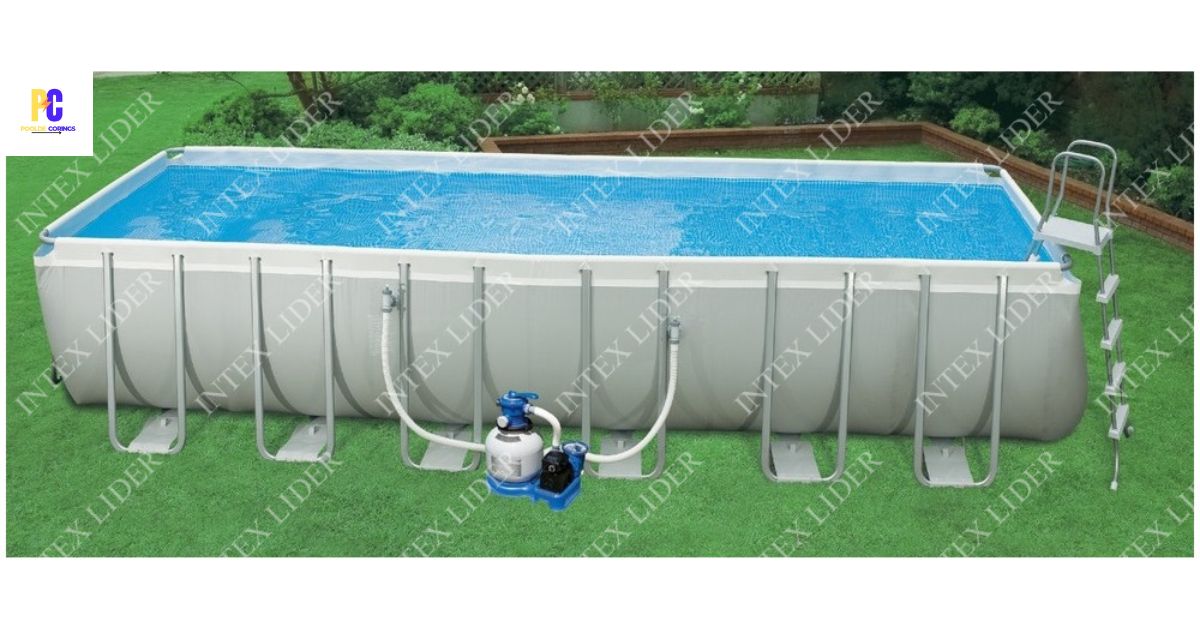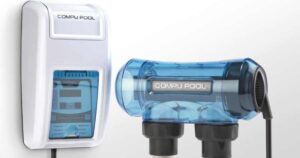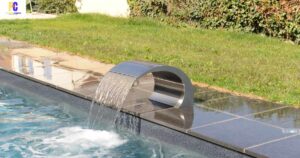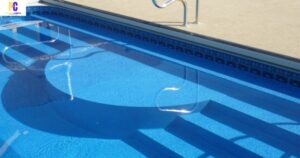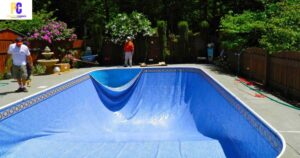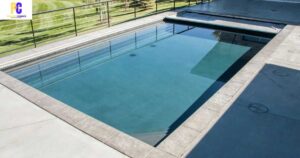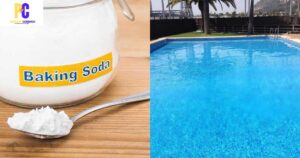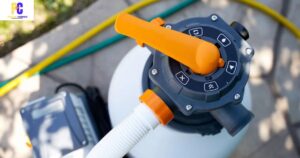Measuring for an above-ground pool liner involves simple steps. First, determine the pool’s diameter by measuring across the center. Next, measure the pool’s depth from the top rail to the bottom. Add a foot to both measurements for overlap. Lastly, choose a liner size that matches these dimensions for a perfect fit, ensuring your pool stays secure and leak-free.
Dive into a hassle-free pool transformation! Ever wondered how to measure for a pool liner above ground? We’ve got you covered with simple steps that guarantee a perfect fit. Get ready to revamp your pool experience – follow our easy guide and make a splash today!
Measuring for a pool liner above ground involves determining the pool’s diameter and depth. First, measure the diameter by finding the distance across the pool’s center. Then, measure the depth from the top rail to the bottom. Add extra footage for overlap. These measurements ensure you select the right-sized liner, creating a snug fit and enhancing your above-ground pool’s durability and aesthetics.
Understanding the Importance of Accurate Measurements
Why Accurate Measurements are Crucial for Above Ground Pool Liners
When it comes to installing an above ground pool liner, accurate measurements are of utmost importance. A well-fitted liner ensures a tight and secure seal, which is essential for preventing leaks and maintaining the integrity of your pool. Incorrect measurements can lead to a host of problems, including wrinkles, bulges, and even premature wear and tear of the liner. So, before you jump into the installation process, take the time to measure your pool accurately.
The Impact of Incorrect Measurements on Pool Liner Installation
Imagine spending hours installing a pool liner only to discover that it’s too loose or too tight. Not only can this be frustrating, but it can also compromise the functionality and aesthetics of your pool. A loose liner may lead to water seepage, while a too-tight liner can develop wrinkles and creases, making your pool look unkempt and unappealing. It’s essential to get it right the first time and avoid the headache of having to redo the entire installation due to inaccurate measurements.
Gathering the Required Tools and Materials
Essential Tools for Measuring Above Ground Pool Liners
To measure your above ground pool accurately, you’ll need a few tools. These include a measuring tape, preferably a flexible one, to get precise measurements of the pool’s length, width, and diameter. Additionally, a pencil or marker will come in handy for marking specific points during the measurement process. Oh, and don’t forget a notepad to jot down your measurements – unless you have a photographic memory!
Materials Needed for Accurate Measurement and Installation
Apart from the tools, you’ll also need some materials to ensure accurate measurement and installation of your pool liner. One essential item is a level, which will help you determine if the pool’s surface is even and if any adjustments need to be made. You may also require a utility knife to trim the pool liner to the right size, along with some adhesive or liner lock to secure the liner in place. And of course, don’t forget the most crucial material – a new, high-quality pool liner!
Preparing the Pool Area for Measurement
Cleaning and Clearing the Pool Area
Before you can start measuring, it’s important to clean and clear the pool area. Remove any debris or leaves that may have accumulated in the pool, as they can affect the accuracy of your measurements. Make sure the pool’s surface is clean and free from any obstructions or objects that could interfere with the measuring process. Remember, a clean pool is a happy pool!
Removing Accessories and Obstacles
To ensure precise measurements, remove any accessories or obstacles around the pool area. This includes ladders, steps, or any other features attached to or near the pool. These objects can obstruct the measuring tape and make it difficult to get accurate readings. By removing these obstacles, you’ll have a clear and unobstructed path for measuring your pool.
Measuring the Pool Size and Shape
Measuring the Diameter or Length and Width of the Pool
To measure the size of an above ground pool, start by measuring either the diameter (if it’s a round pool) or the length and width (if it’s an oval or rectangular pool). For round pools, stretch your measuring tape from one edge of the pool’s wall to the opposite edge through the center, to get the diameter. If your pool is oval or rectangular, measure the length from one end to the other and the width from side to side. Make sure to measure both dimensions precisely to guarantee an accurate fit for your liner.
Determining the Shape of the Pool (Round, Oval, Rectangle, etc.)
Once you have measured the diameter or length and width of your pool, you can determine its shape. Most above ground pools are either round, oval, or rectangular, but there are also various other shapes available. Knowing the shape is vital when choosing a properly fitted liner. If you’re unsure about the shape, take a step back and look at the pool from a distance to visually identify its shape. This information will help you find the right liner for your pool and ensure a seamless installation.
Now that you understand the importance of accurate measurements, have gathered the necessary tools and materials, prepared the pool area, and learned how to measure the size and shape of your pool, you’re ready to embark on your pool liner installation journey! So put on your measurement hat and get ready to make your pool the envy of the neighborhood.
Calculating the Liner Size and Depth
Calculating the Liner Size Based on Pool Shape and Measurements
Measuring for a pool liner may seem like a daunting task, but fear not, it’s simpler than you might think. The first step is determining the size of the liner based on the shape and measurements of your above-ground pool. To do this, measure the width, length, and height of your pool.
For a round pool, measure the diameter (width) and divide it by two to get the radius. Then, square the radius and multiply it by 3.14 to find the area of the pool. Multiply the area by the height to determine the volume of the pool.
For an oval pool, measure the longest width and longest length. Divide each of these measurements by two to get the radii. Then, follow the same steps as for a round pool to calculate the liner size.
Determining the Appropriate Depth for the Pool Liner
The depth of the pool liner is another important factor to consider. Most above-ground pools have a uniform depth, but if your pool has a deep end, you need to measure the depth at that specific point. Measure from the top of the wall to the bottom of the pool at the deepest point to determine the appropriate liner depth.
Tips for Overcoming Common Measurement Challenges
Dealing with Uneven Ground or Sloping Pool Areas
Sometimes, measuring for a pool liner can become tricky if your pool is on uneven ground or has sloping areas. In these cases, it’s best to measure multiple points along the slope or uneven ground and use the average measurement. This will help ensure a better fit for your liner.
Handling Irregular Pool Shapes and Unusual Features
If your pool has irregular shapes or unusual features, such as step sections or ladders, measuring can become a bit of a puzzle. Break down the measurements into smaller sections and measure each one individually. Then, add them together to get the total size. Don’t forget to consider any extra material needed to cover these unique features.
Selecting the Right Pool Liner Based on Measurements

Considering Different Pool Liner Materials and Styles
Once you have your measurements, it’s time to find the perfect pool liner. There are various materials and styles available, so consider factors like durability, ease of maintenance, and color options. Vinyl liners are popular for their affordability and versatility, while thicker liners offer increased durability.
Matching the Pool Liner to the Pool’s Aesthetic and Functionality
While functionality is important, aesthetics play a role too. Choose a pool liner that matches your desired look and complements your pool area. Whether you prefer a natural stone appearance or a vibrant and colorful design, there’s a pool liner out there to suit your style.
Finalizing the Installation Process
Double-Checking Measurements Before Proceeding with Installation
Before you start the installation process, it’s crucial to double-check your measurements. One small error can lead to a poorly fitting liner. Take the time to re-measure and ensure the accuracy of your calculations. It’s better to be safe than sorry!
Seeking Professional Assistance If Needed
If measuring and installing a pool liner seems overwhelming, don’t hesitate to seek professional assistance. Pool experts can help ensure that the liner fits perfectly and handle any challenges that may arise during the installation process. Sometimes, it’s worth the investment to have peace of mind and a hassle-free experience
Now that you have a better understanding of how to measure for a pool liner above ground, you’ll be well-equipped to transform your pool and dive into a summer full of fun and relaxation!
By following the steps outlined in this article, you can confidently measure for a pool liner above ground and ensure a smooth and successful installation. Accurate measurements are the key to choosing the right liner and avoiding any unnecessary complications or expenses down the line. Remember to double-check your measurements, seek professional assistance if needed, and select a liner that suits both your pool’s aesthetics and functionality. With proper measurements and careful planning, you’ll be well on your way to enjoying a beautiful and durable pool liner that will enhance your above ground pool for years to come.
Frequently Asked Questions
Why is it important to measure my above ground pool accurately for a liner?
Accurate measurements are crucial for selecting the right pool liner that fits your pool’s size, shape, and depth. Incorrect measurements can lead to a poor-fitting liner, which can cause wrinkles, leaks, and other installation issues.
Can I use the same liner measurements for an oval-shaped above ground pool?
No, oval-shaped pools require specific measurements to account for their unique shape. It is important to measure the length, width, and radius of the pool properly to ensure a proper fit for the oval-shaped liner.
What should I do if my pool has irregular features or obstacles?
If your pool has irregular features or obstacles such as ladders, steps, or skimmers, it is important to measure around these elements to ensure the liner can accommodate them. You may need to make additional measurements and adjustments to ensure a proper fit.
Can I install the pool liner myself based on the measurements?
While it is possible to install the pool liner yourself, it is recommended to seek professional assistance, especially if you are unsure about the measurements or face any challenges during the installation process. Professional help can ensure a precise and successful installation.
FAQ,s
How do I know what size above ground pool to get?
Family users should typically allow approximately 15 square feet of water surface for each potential swimmer.
What size are above ground pool liners?
To rule out the possibility of bowed walls, measure each diameter twice, at the top of the wall and at the bottom of the wall.
How do I know what pool liner I need?
To determine whether or not your above ground swimming pool is designed to accommodate a beaded pool liner, check under the top rail located on the inside of the pool.
What is the best thickness for an above ground pool liner?
The shape is important: if the pool has a lot of tight, intricate turns, it’s better to go with a 20 mil liner in order to achieve a better fit.
How do I calculate pool size?
Multiplying that by the depth gives the volume in cubic feet. Since there are 7.5 gallons in each cubic foot, multiply the cubic feet of the pool by 7.5 to arrive at the volume of the pool, expressed in gallons.
Conclusion
measuring for a pool liner above ground is actually much easier than it may initially seem. By following these simple steps, you can ensure a perfect fit and avoid any unnecessary headaches down the line. Start by gathering the necessary tools, such as a measuring tape and marker. Then, measure the dimensions of your pool from both the inside and outside walls to ensure accuracy.
Don’t forget to account for any slopes or bends in the shape of your pool. Once you have these measurements, calculate the total square footage by multiplying the length and width together. Finally, take note of any special features like steps or ladders and make sure to communicate these to your supplier when ordering your liner. With this information at hand, you’ll be well-prepared to shop for a new pool liner that will fit like a glove and make those hot summer days even more enjoyable.
